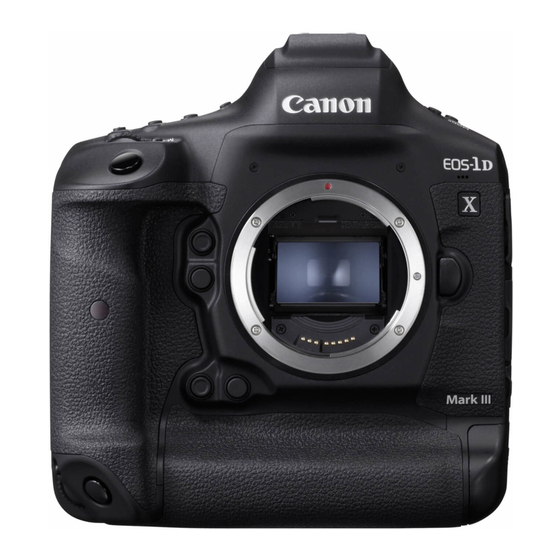Canon EOS-1D Wskazówki i techniki - Strona 18
Przeglądaj online lub pobierz pdf Wskazówki i techniki dla Oprogramowanie Canon EOS-1D. Canon EOS-1D 35 stron. For macintosh
Również dla Canon EOS-1D: Instrukcja obsługi (28 strony), Instrukcja obsługi (41 strony), Instrukcja oprogramowania (2 strony), Zarządzanie punktami Af (2 strony), Instrukcja obsługi oprogramowania (50 strony), Katalog części (38 strony)

Background
Traditionally photographers have used the FLR (focus, lock, recompose) method when
interfacing with their camera and their subject. This is how it had to be done with
manual focus cameras and the early auto-focus models with a single focusing point.
Almost everyone knows how to use FLR, but it can cause problems. First, it's not nearly
as fast as some of the methods we'll discuss here. Metering is less precise, particularly
flash metering. Additionally, it can lead to backfocusing problems when shooting at
wider apertures within 15 feet of the subject.
The fastest and most accurate way to work is to compose first and then use the benefits
of the 45-point Area AF sensor to get your focusing and metering settings.
By using this Event combination, the photographer obtains many focusing options, all
without having to take attention away from the subject. It also allows the scene to be
composed in the viewfinder prior to choosing a focusing point. This is helpful because
in shooting these types of events, people are unpredictable in their movements and
with a quick flick of the thumb the photographer can be ready for any rapidly changing
shot without having to lock focus and recompose. Compose the shot, and then just pick
the point that works best.
Another advantage is that when using this combination of settings with Evaluative
Metering, the camera will give more precise metering for your intended subject and do a
better job of automatically compensating for backlighting and unevenly lit scenes.
For EOS-1D and EOS-1Ds cameras that use E-TTL (not the newer E-TTL II), this
combination will also give you much more reliable flash exposures when you've chosen
a focusing point that lands on your subject, rather than using FLR.
It will take some practice to break the habit of FLR, but once you learn how to use the
45-point AF system effectively, it can really improve your performance as a
photographer.
Operation
Turn the QCD on the back of the camera to "roll" from AF point to AF point along the
outer periphery of the AF Area ellipse. Tap the Assist Button to immediately go to the
center AF point (this combination has automatically assigned the center point as the
HP). To get off the center point and back to an outer AF point, simply use the QCD again.
This combination affects the focus point selection method only, not the focus activation.
Actual focusing is done by pressing the shutter release halfway.
Hidden Feature: To get back to AFPS immediately... while holding the shutter release in
the halfway position (SW-1), tap the AF Point Selection Button and release. The camera
will stay on AFPS until you either use the QCD or tap the Assist Button. This is useful
because generally, in well over 50% of shots in a wedding or event type environment,
I. CAMERA FEATURES AND OPERATION
18
